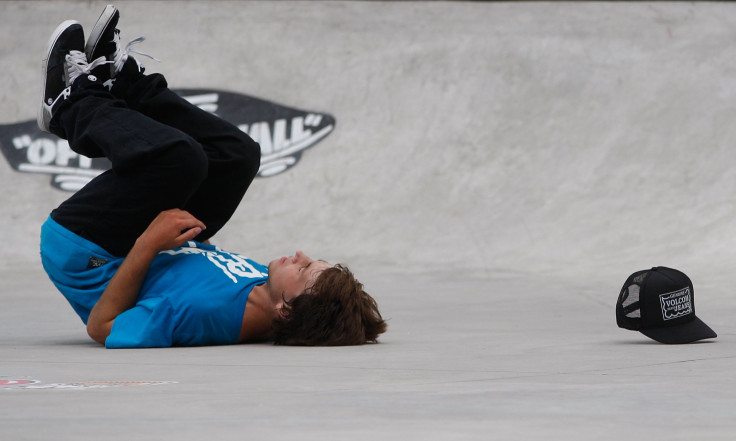Growth Spurts Explain Why Tall Teen Boys Are So Clumsy

Remember back in high school when all the tall kids were awkward and clumsy? Especially for boys, growth spurts can dramatically affect teens’ coordination, and new research has discovered why.
The study, published in Biomedical Engineering OnLine, sought to determine if growth spurts during adolescence was associated with changes in motor control and coordination. Though walking is a skill that we learn early in life, the researchers say the process of learning to walk continues through adulthood, suggesting the “clumsiness” of tall, teenage boys could be a consequence of rapid growth.
To test the theory, researchers analyzed the walking habits of 88 teenage boys, all of whom were 15 years old. The boys were asked to walk 10 meters, at the speed of their choice, back and forth four times. As they walked, the boys wore wireless sensors that tracked the movements of their torsos and legs. The researchers used these sensors to monitor the boys’ smoothness of gait (stride), step regularity, and balance — three characteristics that the researchers say are all guided by motor control.
The researchers also measured the heights and weights of the boys on two separate occasions, with three months in between. During this three-month period, 19 of the boys had growth spurts, defined as growth of more than 3 centimeters. These boys were then categorized into one group, called “grown,” while the others fell into a “not grown” group.
The “grown” group was asked to repeat the walking tests after those three months, and the results showed that these boys had decreased smoothness of gait and step regularity.
"A sudden increase in height affects the body's ability to control established motor skills, such as walking,” said the study’s lead author, Dr. Maria Cristina of the University of Bologna, in a press release. “Adolescents tend to show previous control of the body when growing up, but the motor control behavior is organized on the body's dimensions. Following a growth spurt, the body needs time to adjust to changes to the periphery, during which time a teenager may walk awkwardly, while teenagers who grow steadily are able to handle growth modifications better and so maintain smoothness and regularity when walking."
The boys were also asked to count backwards in intervals of eight as they walked. This mental arithmetic task was designed to test the cognitive demand of gait control. And though all of the boys showed a decreased ability to walk during this test, the “not grown” group walked much more smoothly during this test than the “grown” group, suggesting the cognitive abilities associated with walking are negatively impacted by growth spurts.
Though the link between motor control and growth spurts is strong, the researchers note that there may be other factors involved. During adolescence, the teenage body goes through many changes, which the researchers say could also affect motor development. With further research, however, these findings could contribute to the development of new therapies for motor control disorders.
Source: Bisi MC, Stagni R. Development of gait motor control: what happens after a sudden increase in height during adolescence? BioMedical Engineering OnLine. 2016.
Published by Medicaldaily.com



























